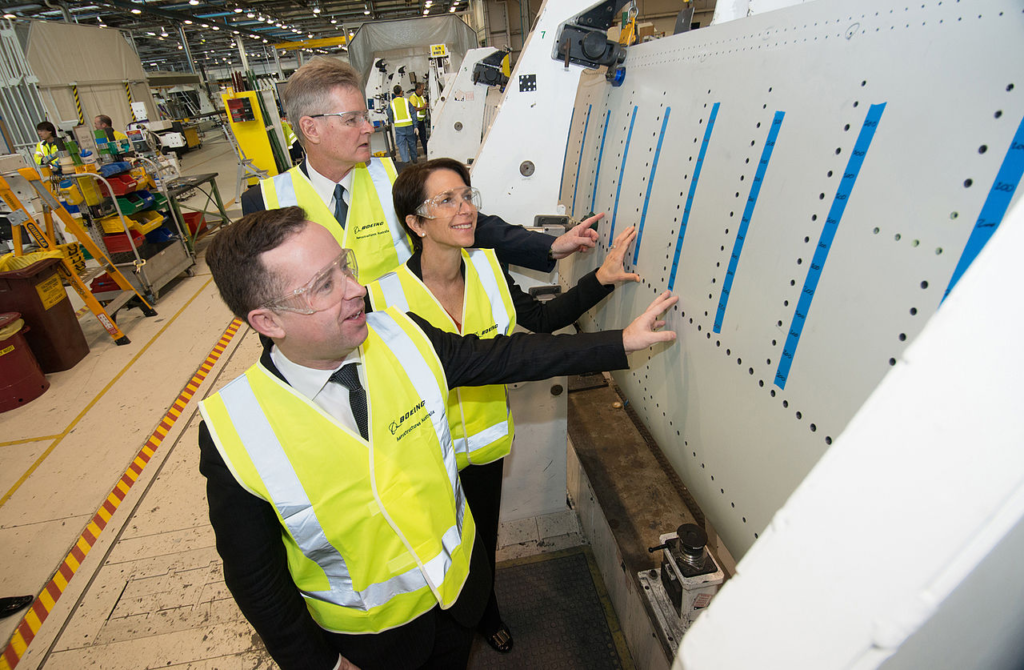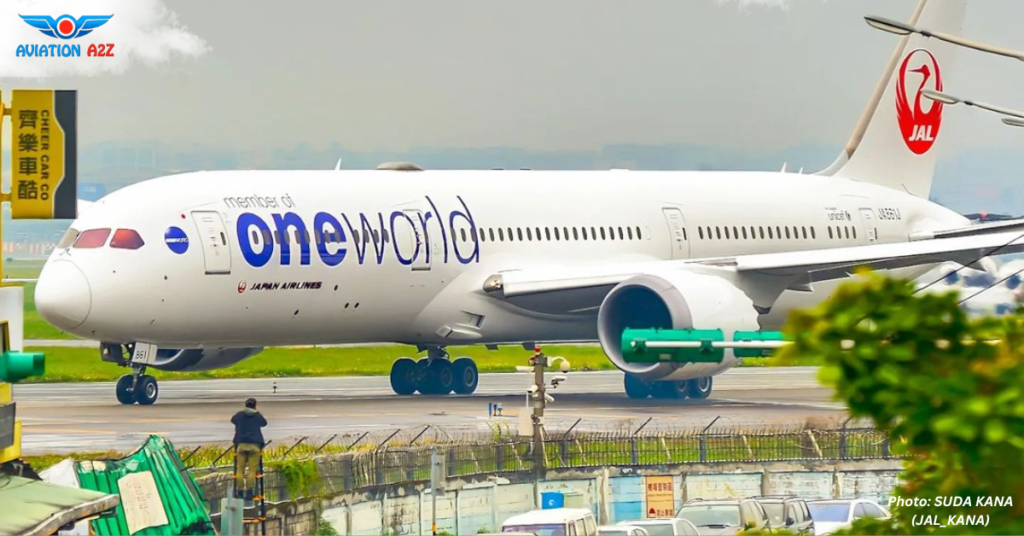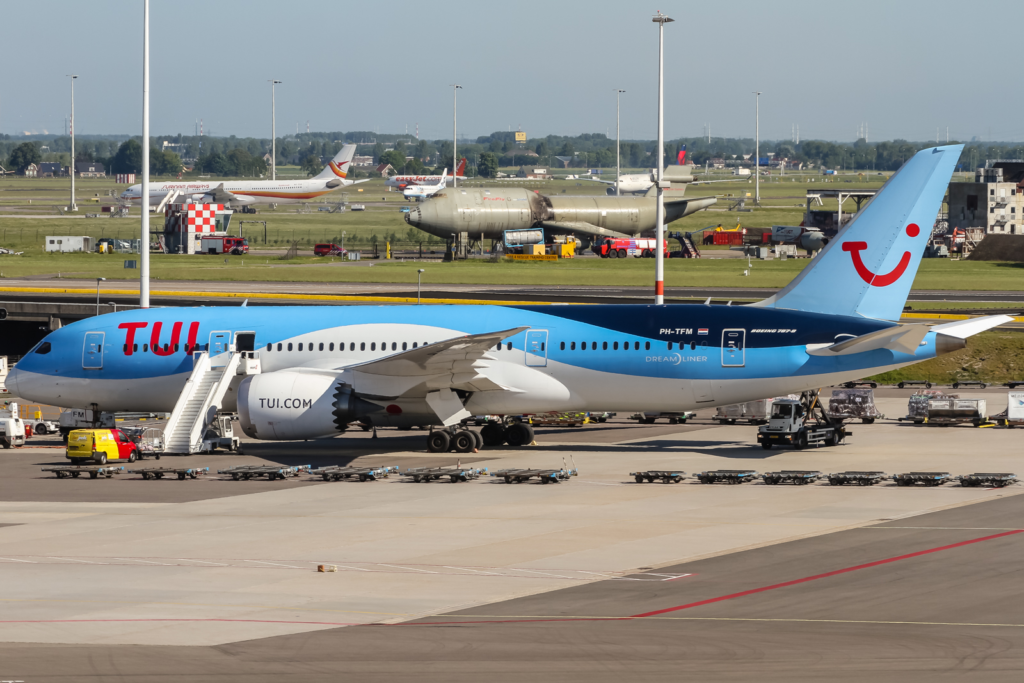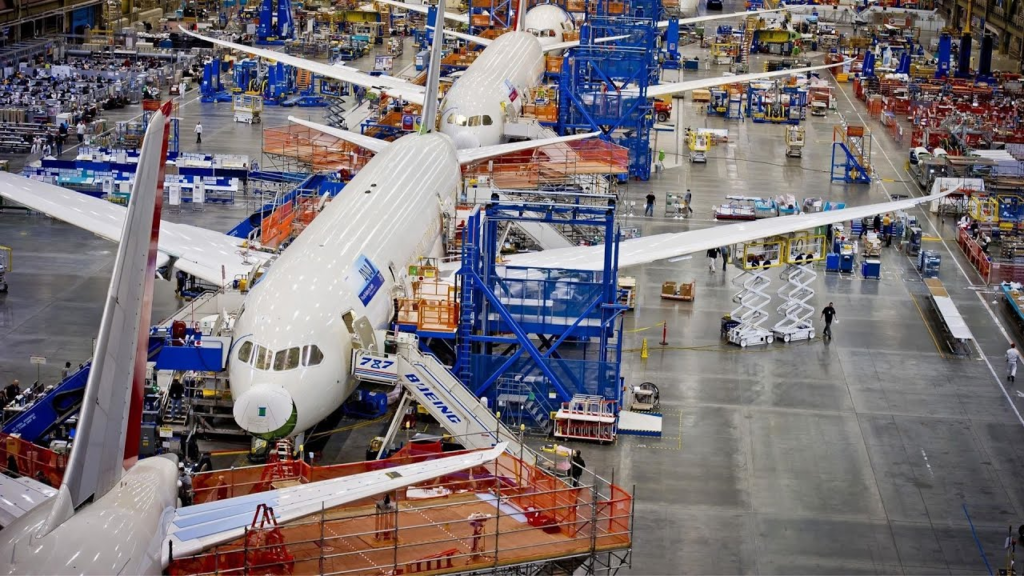NEW YORK- The Federal Aviation Administration (FAA) is conducting an investigation into assertions made by a Boeing engineer regarding potential issues with the fastening of sections of the fuselage of the 787 Dreamliner.
The engineer, Sam Salehpour, who was involved in the plane’s development, outlined his concerns in interviews with The New York Times and documents submitted to the FAA. While a spokesperson for the agency acknowledged the investigation, they declined to further comment on the matter.

FAA 787 Whistle-Blower Flaws
According to Mr. Salehpour, who boasts over a decade of experience at Boeing, the problems with fastening the fuselage sections arose due to alterations in the assembly process on the manufacturing line.
He explained that the fuselage sections, sourced from various manufacturers, do not perfectly align in shape where they are joined together.
Boeing acknowledges the implementation of those manufacturing adjustments, yet a company spokesperson, Paul Lewis, affirmed that these changes have “no impact on the durability or safe longevity of the airframe.”
Mr. Lewis further stated that Boeing has conducted extensive testing on the Dreamliner and has concluded that the issue does not pose an immediate safety concern for flight operations.
He added that their engineers are conducting thorough analyses to determine if there could be any potential long-term fatigue concerns for the aircraft fleet. However, Mr. Lewis assured that even if such concerns were identified, they wouldn’t affect the in-service fleet for many years. Boeing is prioritizing comprehensive analysis over haste to ensure the accuracy of their findings.
In a subsequent statement, Boeing asserted its full confidence in the 787 Dreamliner, stating,
“These allegations regarding the structural integrity of the 787 are unfounded and do not reflect the extensive efforts Boeing has undertaken to guarantee the quality and long-term safety of the aircraft.”

Series of Issues
Mr. Salehpour’s allegations contribute another layer to the intense scrutiny Boeing has been under since a door panel detached from a 737 Max aircraft during an Alaska Airlines flight in early January, prompting concerns about the company’s manufacturing practices. Subsequently, Boeing announced restructuring its leadership, and the Justice Department initiated a criminal investigation.
Mr. Salehpour’s concerns will be discussed on Capitol Hill later this month. Senator Richard Blumenthal, a Democrat from Connecticut and the chairman of the Senate Homeland Security and Governmental Affairs Committee’s investigations subcommittee, intends to convene a hearing with Mr. Salehpour on April 17.
Senator Blumenthal stated that he aims for the public to hear directly from the engineer about his concerns.
In a statement, Mr. Blumenthal expressed deep concern over the repeated and alarming allegations regarding Boeing’s manufacturing deficiencies. This suggests a disturbing absence of safety culture and protocols where profit takes precedence over all else.
The Dreamliner, a wide-body jet renowned for its superior fuel efficiency compared to many other long-haul aircraft, owes much of its efficiency to its lightweight composite construction. Introduced in 2011, this twin-aisle aircraft has garnered substantial orders for Boeing while posing challenges for the company.
Over the years, Boeing has grappled with a series of issues associated with the Dreamliner, including battery malfunctions that prompted the temporary grounding of 787s worldwide.
Furthermore, Boeing has faced numerous challenges at its South Carolina plant, where the Dreamliner is manufactured.
The recent death of John Barnett, a prominent Boeing whistle-blower who raised concerns about manufacturing practices at the plant, has added to the company’s woes. Barnett’s death ruled as a self-inflicted gunshot wound, underscores the gravity of the situation.

Flaws in Manufacturing
The Dreamliner pioneered the extensive use of composite materials instead of traditional metal in constructing the aircraft, including critical components like the fuselage and the aircraft’s body.
Composites, often crafted by combining materials such as carbon and glass fibres, offer a lighter alternative to metals. However, being relatively newer materials, less is understood about their long-term endurance under the stresses of flight.
These stresses can induce fatigue, a phenomenon where the material’s integrity weakens over time, potentially compromising safety if the material fails.
Mr. Salehpour stated that he faced repeated retaliation for voicing concerns about shortcuts taken by the aircraft manufacturer while assembling the Dreamliner’s fuselage components.
Debra S. Katz, an attorney representing Mr. Salehpour, asserted that her client diligently raised his concerns with Boeing officials, but they failed to heed his warnings. She stated that instead of addressing the issues, Boeing silenced Mr. Salehpour and transferred him.
Ms. Katz highlighted this as indicative of Boeing’s prevailing culture, which she described as prioritizing aircraft production and disregarding serious concerns about planes’ structural integrity and manufacturing processes.
In response, Boeing stated that it encourages its employees to report issues and prohibits retaliation within the company.
Ms. Katz mentioned that the FAA interviewed Mr. Salehpour on Friday. While FAA Administrator Mike Whitaker did not directly comment on Mr. Salehpour’s allegations, he reiterated the regulator’s stringent stance against Boeing following the Alaska Airlines incident.
“This will not entail a return to the typical operations for Boeing,” Mr. Whitaker remarked. “They must demonstrate genuine and substantial improvements. Implementing fundamental changes will demand a consistent and determined effort from Boeing’s leadership, and we will ensure they are held responsible at each stage of this process.”
Stay tuned with us. Further, follow us on social media for the latest updates.
Join us on Telegram Group for the Latest Aviation Updates. Subsequently, follow us on Google News

